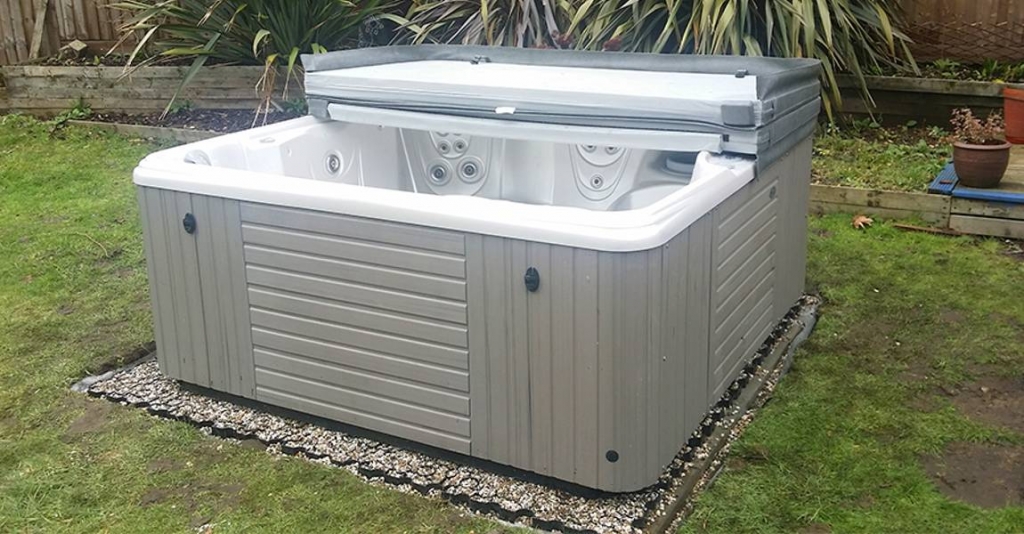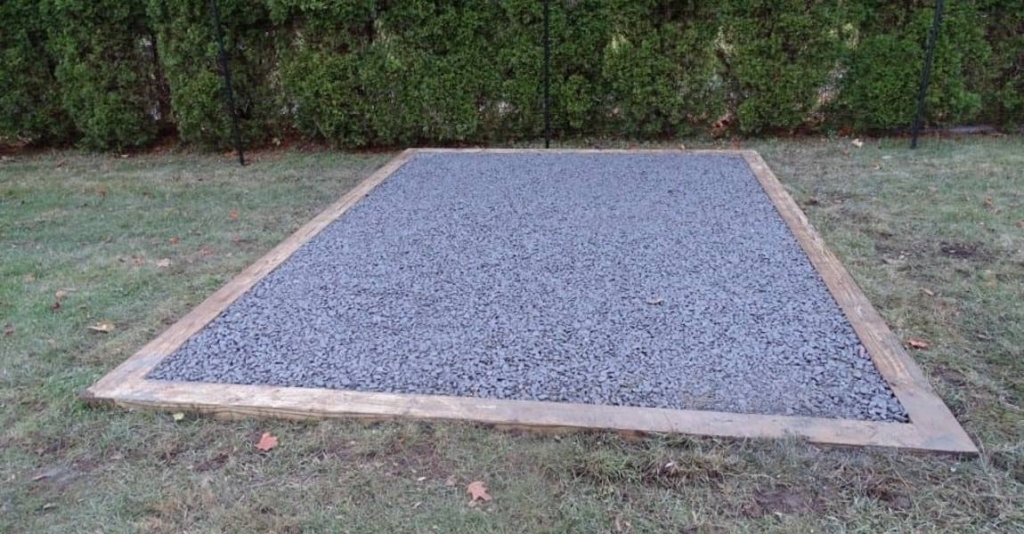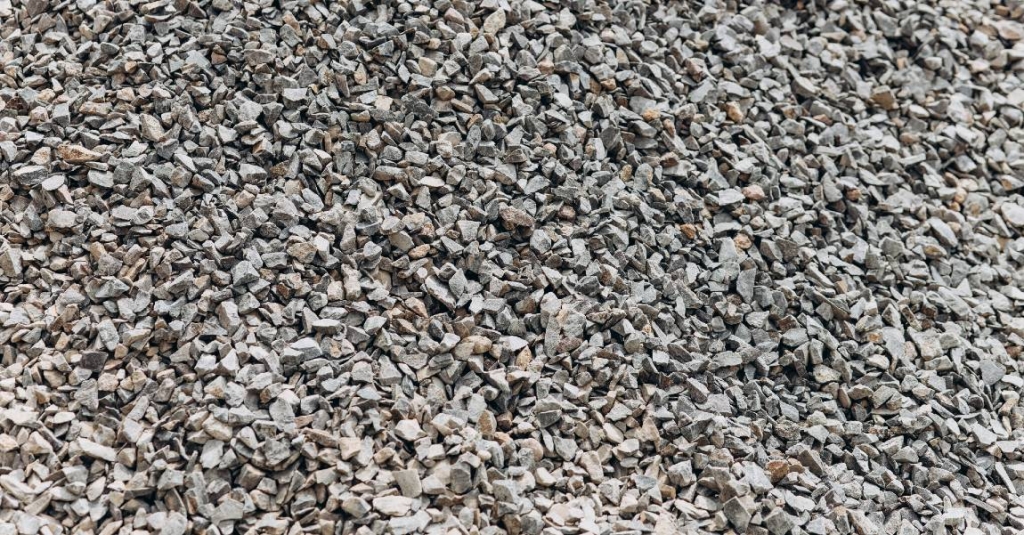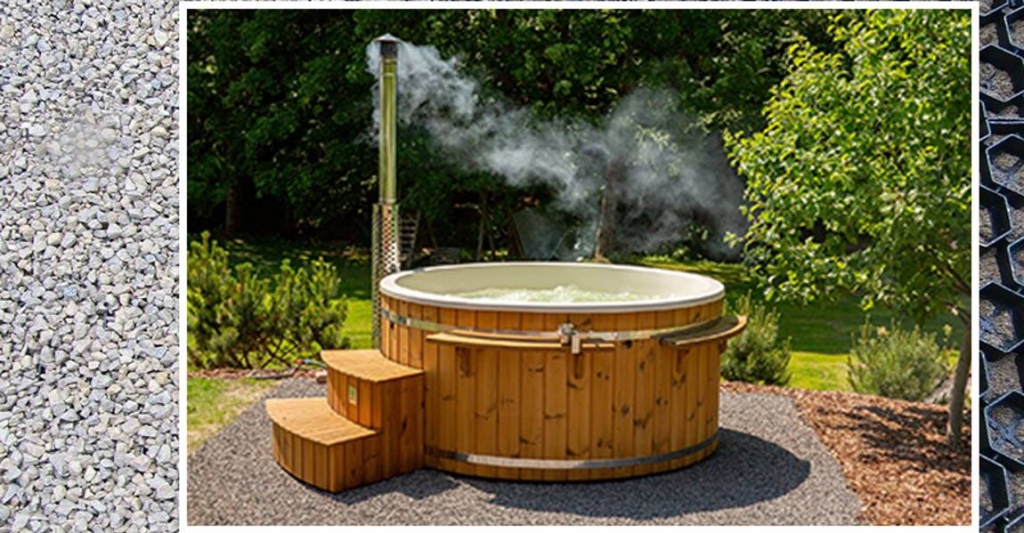Adding a hot tub enhances any home. It’s the perfect place for solitary relaxation or get-togethers with friends and family. But before installing your hot tub, new owners need to decide how to prepare their hot tub base.
A seven-person hot tub – like the Essence from Swim Spas Denver – weighs around 700 pounds. Not bad. Hot tubs can be installed on a deck or patio, but the most common bases are a concrete pad or using gravel as a base. Whichever route you go, a solid base for your hot tub is critical!
At 8.3 pounds per gallon, 356 gallons of water brings the hot tub’s total weight up to two tons! So let’s look at different base options and the best stone to use in a gravel pad.
- Hot Tub Base Options
- Using Gravel as a Base
- Choosing the Best Gravel for the Base
- The Best Gravel Base
- Perfect Combo: Crushed Stone and Pea Gravel

Hot Tub Base Options
Because of the weight of a full hot tub or swim spa, having a stable, level hot tub or spa pad is job one. Owners can install their hot tub on a deck or patio, but that means ensuring proper reinforcement and strength. Because that adds considerable expense, most owners opt for concrete pads or gravel bases for their hot tub to sit on.
Both are – relatively – easy to install in a leveled, excavated area of the yard. Concrete is a good choice but does add expense. With costs at least twice as high as gravel, a concrete pad adds to your hot tub construction budget. And, over the long haul, concrete pads can crack and shift.
Not so with hot tubs that sit on gravel. Among the benefits of a gravel base is that it’s self-leveling and self-draining. And a gravel base won’t suffer from the effects of seasonal temperature swings as the ground freezes and thaws.
Using Gravel as a Base
Besides the cost savings, a gravel base for your hot tub is easier to install. The base itself only needs to be at least six inches deep. Excavating and leveling a spot for the base is one option.
Another is building a level timber frame that sits above ground level and filling it with gravel. Putting heavy-duty weed cloth under the gravel keeps pesky weeds from growing up through the gravel.
The best gravel for a solid base ranges from 3/8’s inch up to 3/4’s of an inch.
Choosing the Best Gravel for the Base
The first thing to know about gravel is that there are two major types. First is crushed stone. The second is naturally formed gravel.

Crushed Stone Gravel
Crushed stone gravel – as the name implies – is made by crushing larger rocks into smaller pieces. Widely used in driveways and as a base for other construction projects, crushed stone gravel comes in various sizes.
Crushed stone is cheaper than natural gravel – a plus. Because it has a rough texture and varies slightly in size, crushed stone gravel interlocks over time. Interlocking minimizes any shifting – and that’s important with your two-ton hot tub sitting on it!
It also provides good drainage, another plus.
Depending on availability in your area, crushed stone gravel comes in several colors. Colors range from white to gray to crushed blue stone. The most typical is simply grayish white.
From a utilitarian standpoint, crushed stone is hard to beat. However, aesthetically, crushed stone leaves a lot to be desired. Crushed stone is bland unless you opt for much more expensive marble chips. And it doesn’t add much to your home’s curb appeal.
One of the other disadvantages of crushed stone is that it’s not the kindest surface for tender, bare feet. Those sharp edges can hurt, even if well tamped down!

Naturally Formed Gravel
The natural tones and soft, round shapes of natural gravel – often called pea gravel – are much more attractive in most settings. This gravel is naturally worn smooth over time by the erosion of larger rocks.
Often found in riverbeds and streams, natural stone has a lot to offer. Its more natural look is why it’s often used in landscaping in sizes ranging from larger river rocks down to pea gravel.
Despite its superior aesthetics, a pea gravel base alone isn’t the best choice as a hot tub base. That’s because its rounded shape doesn’t lock together as well as the more irregular shapes of crushed stone.
That means a less stable base – and more likelihood that some of the gravel ends up on the lawn.
On the flip side, pea gravel is far easier on your bare feet!
The Best Gravel Base
Installation experts, like the pros at Swim Spas Denver, agree that the best way to install gravel as a base for your hot tub is to combine crushed stone and pea gravel.
The first step, of course, is getting your wooden frame or excavation prepped and leveled. Don’t forget the weed cloth! Then, add a minimum of four inches of crushed stone. Tamp that down well, either by hand or, better yet, with a rented mechanical tamper.
Check for level again, then add up to two inches of your choice of smooth, natural pea gravel. Once you’ve got the pea gravel tamped down and leveled, you are ready to place your hot tub on the base. Simple, quick, and effective.
With a combination of crushed stone and pea gravel, you get the best of both worlds. Crushed stone gives you the stable, interlocking base you need. And the pea gravel is more attractive – and feet-friendly!

Perfect Combo: Crushed Stone and Pea Gravel
Knowing how easy it is to use gravel as a base for your hot tub – and what your best gravel options are – it’s time to start imagining adding a hot tub to your home. Gravel bases using crushed stone and a top layer of pea gravel are stable, self-draining, and cost-effective.
Add aesthetics into the mix, and not only will your hot tub become a hot spot of activity, but it will also boost your home’s curb appeal! One call to Swim Spas Denver is all it takes to start enjoying your own hot tub with family and friends!